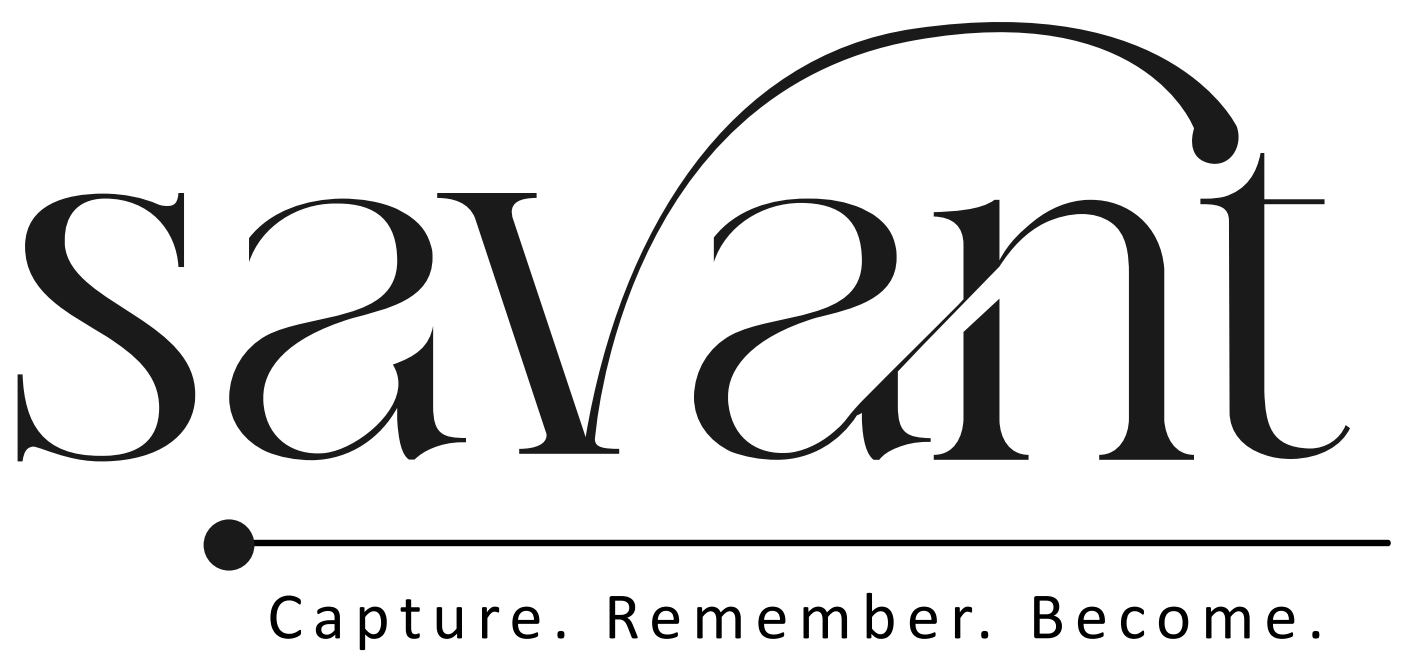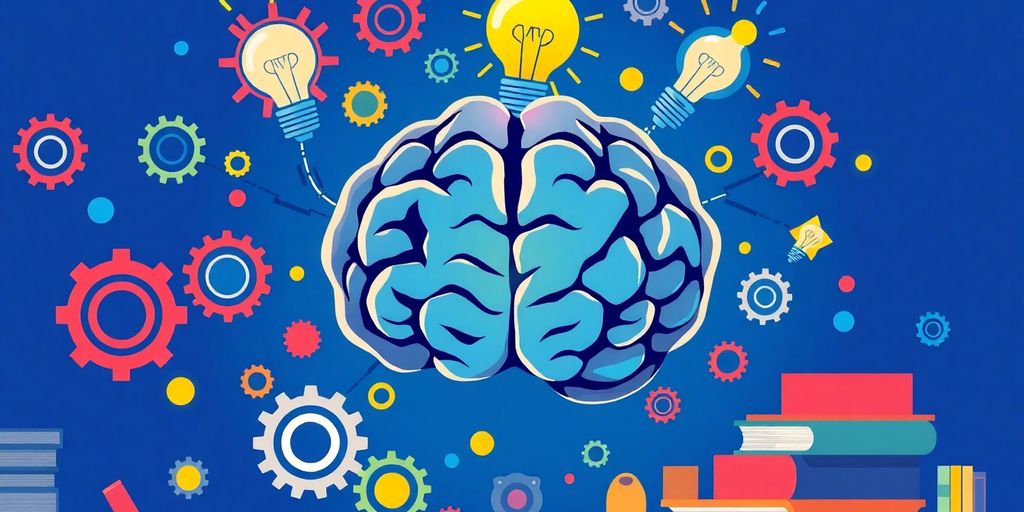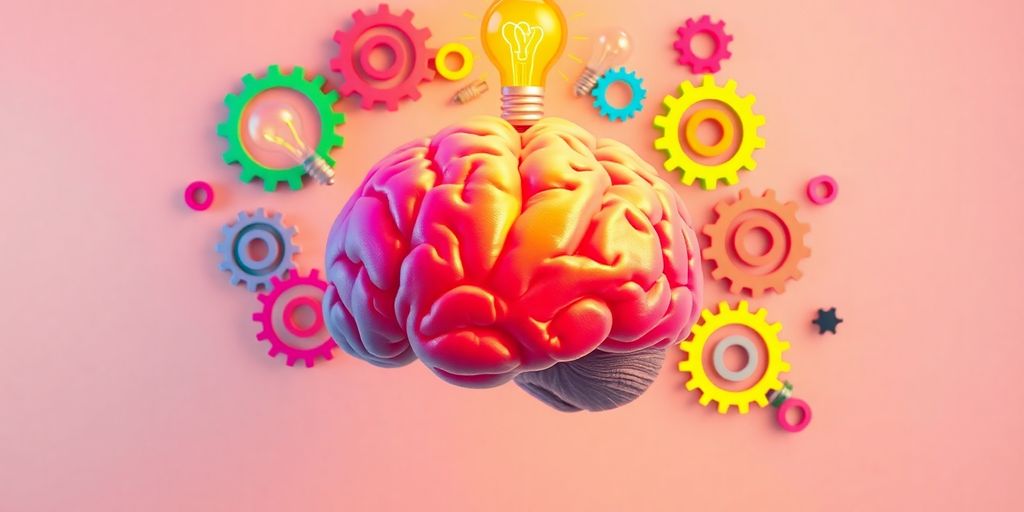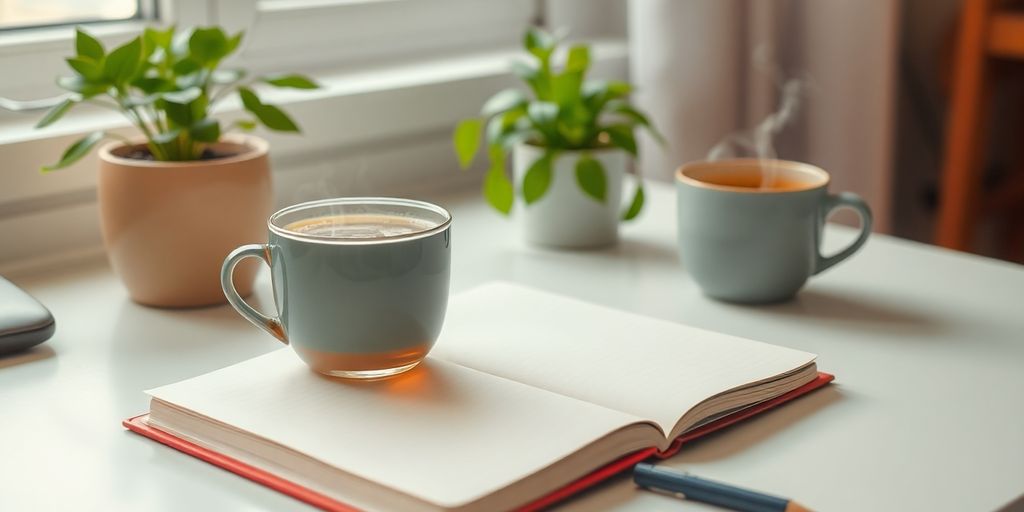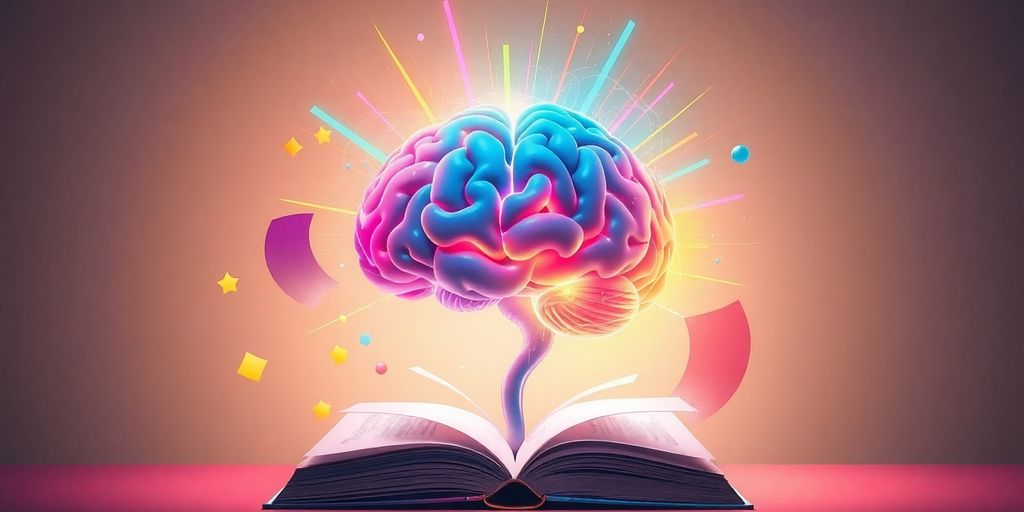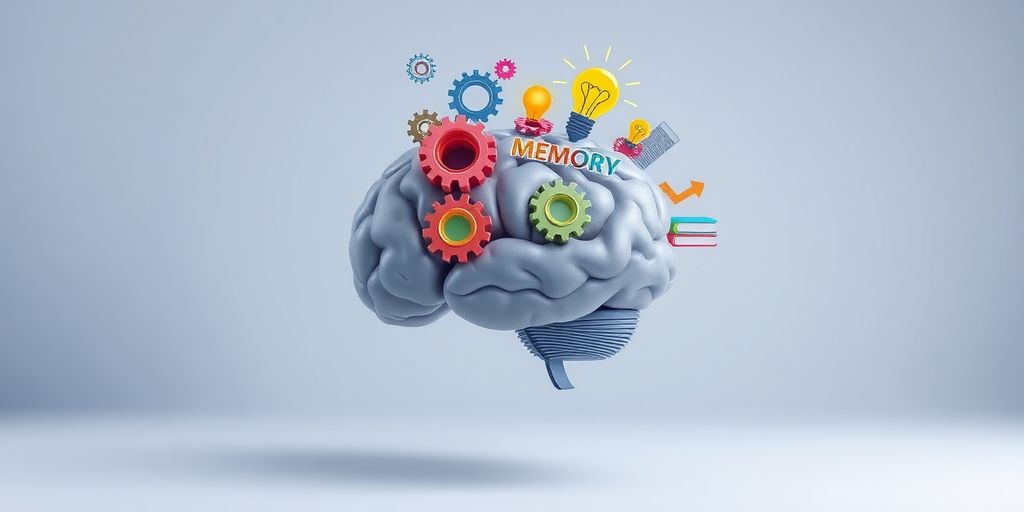Ever feel like you’re reading the same page over and over but nothing sticks? You’re not alone. Many students struggle with memory when it comes to studying. But guess what? There are some tricks you can use to make things easier. From catchy rhymes to breaking info into chunks, these methods can help you remember better. Let’s dive into some simple memory techniques that can boost your study game.
Key Takeaways
- Mnemonics can make memorizing fun and effective. Try acronyms or silly songs.
- Chunking breaks big info into bite-sized pieces, making it easier to digest.
- Visual aids like charts and color coding can make complex stuff clearer.
- Spaced repetition helps lock info into long-term memory over time.
- A good study environment is key. Keep it organized and distraction-free.
Unlocking The Power Of Mnemonics
Unlocking the power of mnemonics is like finding a secret key to your memory. It’s about using creative tricks to make information stick. Let’s dive into some fun ways to use mnemonics for better recall.
Creating Catchy Acronyms
Acronyms are like shortcuts for your brain. You take the first letter of each word you need to remember and form a new word or phrase. It’s like a mental cheat sheet. For instance, to remember the order of operations in math, you might use "PEMDAS" (Parentheses, Exponents, Multiplication and Division, Addition and Subtraction). Acronyms turn complex information into something simple and memorable.
Using Rhymes And Songs
Rhymes and songs are not just for kids. They can be powerful memory tools for everyone. Think of how you learned the alphabet with a song. By setting information to a tune or rhythm, you engage more parts of your brain, making it easier to recall. Next time you need to memorize something tricky, try turning it into a jingle!
Visual Mnemonics For Better Recall
Visual mnemonics use imagery to help remember information. Imagine you’re trying to memorize a list of items. Picture each item in a familiar place, like your living room. This technique, sometimes called the "memory palace," helps you visualize and organize information spatially. Images are powerful because they stick in your mind and create strong mental associations.
Mnemonics transform learning from a chore into a creative process. They make studying less about rote memorization and more about making connections that last.
Chunking Information For Easy Retention
Chunking is a memory retention technique that facilitates the recall of large amounts of information by organizing it into manageable groups. Let’s dive into how this can be a game-changer for your study sessions.
Breaking Down Complex Concepts
Ever stared at a massive textbook page and felt overwhelmed? You’re not alone. The trick is to break things down. Imagine trying to eat a whole pizza in one bite—impossible, right? But slice it up, and suddenly it’s manageable. Similarly, breaking down complex topics into smaller, bite-sized pieces can make them much easier to handle. This method not only makes studying less daunting but also helps in retaining the information longer.
Using Lists And Categories
Lists are your best friends when it comes to studying. They help organize thoughts and information systematically. For example, if you’re studying biology, you might list out categories like cell structure, genetics, and ecosystems. This way, you can focus on one category at a time, making your study sessions more productive.
- Cell Structure: Membrane, Nucleus, Cytoplasm
- Genetics: DNA, RNA, Genes
- Ecosystems: Biomes, Food Chains, Biodiversity
The Benefits Of Grouping Related Ideas
Grouping similar ideas can enhance understanding and memory. Think of it like sorting laundry. You wouldn’t mix whites with colors, right? Similarly, when studying, grouping related concepts helps keep your thoughts organized and reduces confusion. This technique can be particularly helpful in subjects like history or literature, where themes and events are interconnected.
"Chunking information not only simplifies the learning process but also boosts confidence. Knowing that you can handle large volumes of information by breaking it into smaller parts makes tackling any subject feel achievable."
Visualizing Success Through Imagery
Mental Imagery Techniques
Imagine you’re trying to remember a grocery list. Instead of just jotting down items, picture them in your mind. Visualize a loaf of bread as a fluffy cloud floating in your kitchen or see a carton of milk as a waterfall pouring into your fridge. This is more than just daydreaming—it’s a way to make information stick by engaging your brain’s visual centers. By turning words into pictures, you can enhance your memory retention.
Drawing Diagrams And Charts
When tackling complex topics, diagrams and charts can be your best friends. They’re like a visual map for your brain, helping you see connections and relationships. For example, if you’re studying biology, sketching out the process of photosynthesis can make it easier to understand and remember. It’s not about being an artist; it’s about breaking down information into bite-sized visual pieces.
Using Color Coding For Clarity
Colors aren’t just for making your notes look pretty. They can actually help in organizing information and highlighting key points. Use different colors to signify different themes or categories. For instance, red for important dates, blue for definitions, and green for formulas. This technique can turn a chaotic page of notes into a structured, easy-to-navigate guide.
Visualization enhances memory retention and recall by engaging the five senses to create vivid mental images. This technique can be effectively used in academic settings to improve learning outcomes and boost success. Visualization enhances memory retention by engaging the five senses to create vivid mental images. This technique can be effectively used in academic settings to improve learning outcomes and boost success.
Active Learning Strategies That Stick

Active learning is all about keeping your brain engaged and interacting with the material you’re studying. It’s not just about reading or listening—it’s about doing. Let’s dive into some strategies that really make learning stick.
Engaging With The Material
Getting involved with your study material is like having a conversation with it. Ask questions, make predictions, and relate it to what you already know. This way, you’re not just passively absorbing information but actively processing it. Try these steps to engage more deeply:
- Ask Why and How: Don’t just accept facts at face value. Question them.
- Connect Ideas: Relate new information to things you’re already familiar with.
- Summarize in Your Own Words: Teaching someone else is a great way to reinforce your understanding.
Self-Quizzing Techniques
Testing yourself is one of the best ways to see what you know and where you need more work. It’s not just about finding gaps in your knowledge. It’s about reinforcing what you’ve learned. Here’s how to make self-quizzing effective:
- Flashcards: These are great for quick reviews and repetition.
- Practice Tests: Simulate exam conditions to get a feel for the real thing.
- Spaced Repetition: Review material over increasing intervals to boost retention.
Teaching Others To Reinforce Knowledge
Explaining what you’ve learned to someone else is a powerful way to solidify your understanding. It forces you to organize your thoughts and identify any areas you’re shaky on. Consider these methods:
- Study Groups: Collaborate and learn from each other.
- Peer Tutoring: Teach classmates or friends to reinforce your skills.
- Use Analogies: Simplify complex ideas by comparing them to everyday concepts.
"The more you teach, the more you learn." This is the magic of active learning. By engaging deeply with the material, testing your knowledge, and teaching others, you’re not just memorizing facts—you’re truly understanding and remembering them for the long haul.
For more on effective learning strategies, check out Nick Schwab’s five active learning strategies that can help boost engagement and retention.
The Art Of Spaced Repetition
Spaced repetition is like giving your brain a workout, but without the sweat. It’s about revisiting information at just the right moments to make sure it sticks. This method is a game-changer for anyone tired of cramming only to forget everything a week later.
Why Timing Matters
Timing isn’t just important in comedy; it’s crucial in spaced repetition too. The idea is to recall information after certain intervals, which helps enhance memory retention. The first recall attempt should be made without consulting study materials, reinforcing the learning process. This method leverages the brain’s natural tendency to forget, using it to strengthen memory by recalling information just as you’re about to forget it.
Creating A Study Schedule
Creating a study schedule with spaced repetition is like setting up a series of reminders for your brain. Here’s a simple way to do it:
- Identify key concepts you need to remember.
- Break your study material into small chunks.
- Schedule review sessions over increasing intervals (e.g., 1 day, 3 days, 7 days).
- Adjust based on how well you recall the information.
This structured approach helps ensure that you’re not just reviewing material but doing so in a way that optimizes long-term retention.
Using Flashcards Effectively
Flashcards are a classic tool for spaced repetition, and for good reason. They’re portable, versatile, and easy to use. Here’s how to make the most out of them:
- Keep it simple: One question or concept per card.
- Use both sides: Question on one side, answer on the other.
- Shuffle regularly to avoid memorizing the order rather than the content.
Tip: Digital flashcard apps often have built-in spaced repetition algorithms, taking the guesswork out of scheduling your reviews.
By incorporating spaced repetition into your study routine, you’re not just memorizing—you’re truly learning. This method helps transform information from short-term to long-term memory, ensuring you’re ready for that next big test or presentation. It’s all about working smarter, not harder.
Building A Productive Study Environment
Creating the right study environment can make a huge difference in how well you absorb information. A well-organized and distraction-free space is crucial for effective studying. Let’s dive into how you can set up a space that works for you.
Minimizing Distractions
Distractions are everywhere, especially with phones and social media just a tap away. To truly focus, try these steps:
- Turn off notifications on your devices or keep them out of reach.
- Choose a quiet corner in your home or library.
- Use noise-canceling headphones or play white noise if you can’t avoid background sounds.
Organizing Your Study Space
An organized space helps you find what you need without wasting time. Here’s how to keep things tidy:
- Keep your desk clutter-free. Only have the essentials like your laptop, notebook, and pens.
- Use folders or shelves to categorize books and papers by subject.
- Ensure good lighting to reduce eye strain and maintain focus.
Setting The Right Mood For Learning
The right mood can enhance your concentration. Think about:
- Adjusting the lighting to a comfortable level—neither too dim nor too harsh.
- Choosing a comfortable chair that supports your back.
- Personalizing your space with motivational quotes or a small plant for a touch of nature.
Creating a productive study environment is about finding what works best for you. Experiment with different setups until you discover the one that helps you concentrate and learn effectively.
Remember, effective study habits are not just about the material you cover, but also about the environment you create for yourself. With the right setup, you’ll be on your way to academic success!
Harnessing The Power Of Sleep For Memory
Reviewing Before Bedtime
Ever notice how some things just click after a good night’s sleep? That’s because your brain is busy processing and storing information while you’re catching those Z’s. If you’re cramming for a test or trying to remember something important, take a few minutes to go over your notes right before bed. Reviewing material before you sleep can help solidify it in your memory. It’s like giving your brain a little nudge to say, "Hey, remember this!"
Napping For Better Recall
Naps aren’t just for kids! A short nap can actually boost your memory, especially if you’re feeling mentally drained. Think of it as a mini-reset button for your brain. Even a quick 20-minute snooze can help sharpen your focus and improve recall. So next time you’re stuck on a problem or need to remember something, try taking a short nap. It might just be the recharge you need.
The Science Behind Sleep And Learning
Sleep isn’t just about rest; it’s a crucial part of learning and memory. During deep sleep, your brain strengthens connections between neurons, making it easier to store new information. Skimping on sleep can seriously mess with your ability to learn and remember. That’s why it’s important to promote healthy brain development by getting enough rest. Aim for a consistent sleep schedule, and try to limit late-night screen time. Your brain will thank you!
Wrapping It Up
So there you have it, folks! Mastering study skills isn’t about doing everything perfectly or following every tip out there. It’s about finding what clicks for you and sticking with it. Maybe some of these memory techniques felt a bit odd at first, but with practice, they can become second nature. Remember, you don’t have to go it alone—academic coaches are there to help if you need a hand. And hey, don’t forget to check out other resources that can make your study sessions even more effective. Keep experimenting, keep learning, and most importantly, keep believing in yourself. You’ve got this!
Frequently Asked Questions
What are mnemonics, and how do they help with studying?
Mnemonics are memory aids that help you remember information by associating it with something easier to recall, like a catchy acronym or a rhyme. They make learning more fun and can help you remember things longer.
How can I break down complex information to make it easier to remember?
You can break down complex information by chunking it into smaller parts, making lists, or grouping similar ideas together. This makes it easier for your brain to process and remember the information.
Why is visualization important for memory?
Visualization helps you create mental images of what you’re learning. This makes the information more vivid and easier to recall later. Drawing diagrams or using color can also help make things clearer.
What is spaced repetition, and why is it effective?
Spaced repetition is a technique where you review information at intervals over time. This helps reinforce the memory and makes it easier to recall later, rather than cramming all at once.
How does a good study environment affect learning?
A good study environment minimizes distractions and helps you focus. Organizing your space and setting the right mood can make studying more effective and enjoyable.
Why is sleep important for memory?
Sleep helps your brain process and store information. Reviewing what you’ve learned before bed can improve recall, and naps can also boost memory retention.
